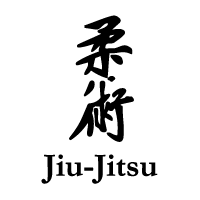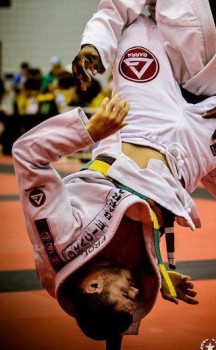The ABC’s of Jiu-Jitsu
Jiu-Jitsu can be overwhelming to a newcomer. There is so much to know and be mindful of when training. Hopefully simplifying things to the ABC’s can help newcomers.
“A” is for Armbar
The Armbar (aka armlock) is a common submission in Jiu-Jitsu. Straitening an opponent’s arm to create a hyperextension at the elbow joint and/or shoulder completes the armbar.
“B” is Brazil
In the 1914,  Mitsuyo Maeda arrived in Brazil and essential to the creation of Brazilian Jiu-Jitsu.
Mitsuyo Maeda arrived in Brazil and essential to the creation of Brazilian Jiu-Jitsu.
“C” is for Control
Being able to control an opponent effectively is an important concept in Jiu-Jitsu.
“D” is for Drill
Drilling is very important. It helps build muscle memory!
“E” is for Escape
Everyone gets caught in submissions, not everyone escapes. Learning the escape can be as important as learning the submission.
“F” is for Flow
Flow rolling is a lighter form of sparing that allows more technique to be used.
Running water never grows stale. So you just have to ‘keep on flowing.’ – Bruce Lee
“G” is for Guard
Guard is a fundamental position in Brazilian Jiu-Jitsu that uses your legs to control an opponent from the bottom position.
“H” is for Happiness
“Always make those around you happy and keep a smile to all people who talk to you. “ – Grandmaster Carlos Gracie Sr.
“Jiu-Jitsu represents the triumph of human intelligence over brute strength” – Grandmaster Helio Gracie
“J” is for Jiu-Jitsu
“There is no loosing in Jiu-Jitsu. You either win or you learn.” – Grandmaster Carlos Gracie Sr.
“K” is for Kimura
Also known as a reverse key-lock, and named after Masahiko Kimura.
“L” is for Lifestyle
Jiu-Jitsu is a lifestyle that can only be understood by those who live it. It involves training Jiu-Jitsu regularly and applying its teachings to everyday life.
The top mount position is one of the most dominant positions in Jiu-Jitsu.
“N” is for No-Gi
Brazilian Jiu-Jitsu can be practiced with a kimono. It can also be practiced without a kimono as no-gi Jiu-Jitsu. Similar technique is applied however participants can no longer grab or utilize the Gi in submission attempts.
“O” is for Omoplata
A popular technique that is best described as a shoulder lock.
“P” is for Professor
In Brazilian Jiu-Jitsu, black belts are often addressed with the title of “Professor.”
“Q” is for Question
Jiu-Jitsu is a technical martial art. Don’t be afraid to ask questions when training.
“R” is for Roll
Sparing in Brazilian Jiu-Jitsu is often referred to as “Rolling.”
“S” is for Sweep
A sweep in Jiu-Jitsu occurs when an opponent from a bottom position reverses and ends up on top or a more dominate position.
“T” is for Triangle
This technique is applied by wrapping two legs around an opponent’s arm and head in such a way that restricts blood flow to the opponent’s brain. The wrapped legs form a shape of a triangle thus the name of the choke.
“U” is for UFC
The Ultimate Fighting Championship has played a big part in the growth of Brazilian Jiu-Jitsu. Though other factors are involved, it is largely responsible for Jiu-Jitsu’s popularity today.
“V” is for Variety
Keeping a variety of techniques in your arsenal is always a good idea.
Jiu-Jitsu is a very physical sport. Proper stretching and warm up should be conducted in order to lessen the chances of injury.
“X” is for X-Guard
The X-Guard is one of the many guard variations in Jiu-Jitsu. Also, not many other Jiu-Jitsu related topics start with “X.”
“Y” is for You-Tube
YouTube is a double-edge sword. It contains a vast amount of material but can also overwhelm students with advanced techniques. Be sure to get a good grasp of fundamentals before attempting any techniques found online.
“Z” is for Zone
Getting in the “zone” occurs in every sport. In Jiu-Jitsu, there are times when you will roll and all the worlds’ problems seemingly disappear. Life is simplified to just submitting the opponent in front of you.
Written By: Patrick J. Flores
Gracie Barra Chino
Twitter: patjflores
Imagem: Google




